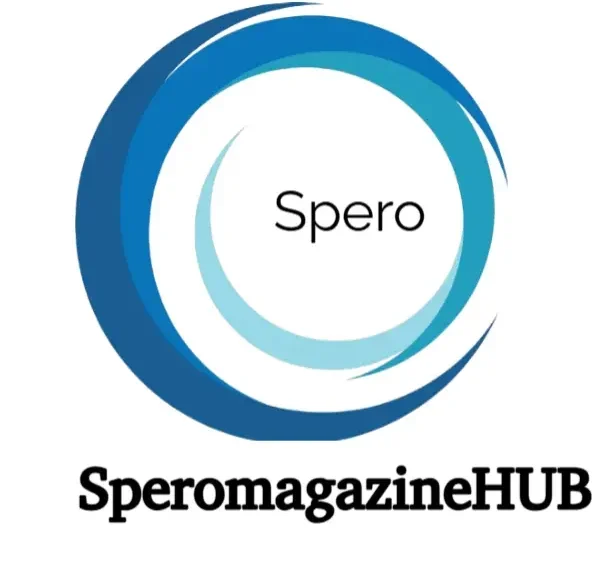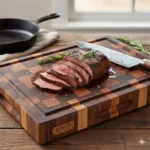SIWA Brand Simple Bag or Fabric Can Make
You walk through a noisy city street. People rush by. Signs flash. You notice a bag. Plain at first glance. Canvas? . You reach out, touch it. It crinkles. Feels like paper. Yet strong. Flexible. Strange. Beautiful.
You pause. What is this thing? It isn’t a bag. It’s a story stitched into material.
That’s what SIWA Brand does. It slows you down in a fast world. Makes you feel. Makes you notice.
While other brands shout, SIWA whispers. It asks you to touch. To look closer. To wonder. And that’s rare.
In this guide, we’ll uncover SIWA’s roots. Its craft. The design philosophy. The people behind the paper and fabric. The meaning behind the crinkles. We’ll compare its two faces—Japan and Ghana. Different cultures, same soul.
If you’ve ever wanted your possessions to feel alive, this is for you.
Origins & Context How SIWA Came
Japanese Roots Paper Innovation & Design
Japan. 2008.
Together, they created Naoron. A material that looks like paper but behaves like fabric. Tear-resistant. Water-resistant. Strong enough to hold up to 10 kilograms.
The name? SIWA (シワ). A clever play. It means crinkle in Japanese. Flip the characters of washi (paper) backward—you get SIWA. That’s how deep the thought goes. Even the name folds back on itself, like its own material.
Everything is made locally in Yamanashi. Handmade. Slow-made. Thoughtfully made. The factory smells like craft and calm.
The Ghanaian Interpretation: Textiles, Heritage & Home
Across continents, another SIWA blooms. Ghana. Founded in 2023 by a Ghanaian woman whose middle name, Bentsiwa, honors her grandmother.
This SIWA focuses on textiles—woven prints, heirloom quilts, heritage design. It celebrates Ghanaian culture, warmth, and artistry.
“Where culture meets cozy,” says their story. Home goods, blankets, handwoven treasures. Each piece tells of ancestors, color, and comfort.
Two brands. Same name. Different souls. Japan’s SIWA—minimal, quiet, crafted from paper. Ghana’s SIWA—colorful, bold, steeped in heritage. Both stories true.
Why It Matters (And Why It’s Confusing)
Search for “SIWA brand.” You’ll see both. People mix them up. Understandably. They share the same word but different worlds.
This article focuses mostly on Japanese SIWA. But the Ghanaian version deserves a nod. It shows how one word can travel across cultures, becoming two reflections of the same human urge—to make something that lasts.
Deep Insights — What Makes SIWA Special
Material Innovation — Naoron & the Paper-Fabric Paradox
Naoron feels like paper. But don’t be fooled. It’s tougher than it looks. Created by Onao using washi-making techniques.
Two kinds exist:
- Soft Naoron: made from wood pulp and polyolefin.
- Hard Naoron: made from recycled PET fibers.
Light. Flexible. Durable. The SIWA Overnight Bag can carry ten kilos without tearing. The texture—soft, wrinkled, quietly beautiful.
You see it and think “fragile.” You use it and realize strength hides in simplicity. That’s the paradox.
The brand proves that innovation doesn’t need to scream. It can whisper through paper folds and hold its own against leather.
Design Philosophy — Minimalism Meets Tactile Storytelling
Naoto Fukasawa noticed something small but profound. When Naoron paper crumpled, it came alive. He said, “Let’s keep that.”
So SIWA doesn’t hide imperfections. It celebrates them. The creases, folds, marks—they show time. They show use.
No logos. No bright prints. Just form, texture, feel. It’s minimalism with a heartbeat.
Each wrinkle tells a story. Like a well-worn jacket or old notebook, SIWA products grow character with age.
Craftsmanship & Location Made in Yamanashi
Everything happens in Yamanashi, Japan. The home of paper craft. Material manufacturing to final stitching—all local.
In a world where “Designed in X, made in Y” dominates, SIWA stands still. Fully Japanese. Fully authentic. Every piece whispers of slow production, of human touch.
Product Ecosystem & Market Positioning
What does SIWA make? Bags, pouches, wallets, book covers, tissue boxes. The famous Overnight Bag—H300×W400×D194mm, only 320g. Strong yet light.
Prices hover around 25,000 JPY (roughly $200+). Not cheap. But then again, neither is time or craft.
SIWA sits between design object and daily companion. Premium but grounded. Quiet luxury for people who notice details others miss.
Sustainability The Leather Alternative
SIWA stands where design meets conscience. It’s vegan. Uses recycled PET fibers. Avoids animal leather.
Water-resistant. Tear-resistant. Lightweight. A bridge between paper and plastic, art and utility.
For the conscious buyer, it’s guilt-free craftsmanship. A material story that doesn’t harm, doesn’t waste, doesn’t shout.
Expert Views & Authority References
Design critics often highlight SIWA when talking about Japan’s innovation with materials. It turns the ordinary—paper—into something extraordinary.
Retailers test its strength. The 10kg load limit is no myth. The Yamanashi production claim? Verified. The brand doesn’t hide behind vague sustainability. It shows its roots.
From Ghana’s side, the textile SIWA brings heritage forward. Woman-owned. Handmade. Honest.
Both share one thing—craft as language. Material as message.
And that’s the real value. Not the bag. Not the quilt. The story that sits inside.
Case Studies Signature Products
The SIWA Overnight Bag (Japan)
The Overnight Bag is an icon. Made of Soft Naoron. Once had paper fasteners—later upgraded to resin for strength.
Light, durable, minimal. Fits city life. You can toss in clothes, books, laptop. It won’t tear. It won’t quit.
Each bag creases differently. Like fingerprints. No two identical. That’s the beauty—imperfection as identity.
SIWA Square Pouch & Other Accessories
Wallets. Pouches. Book covers. Small but mighty. All share the same soft-crumpled look.
Retailers describe them as “water-resistant and strong yet featherlight.” They fit any hand, any bag, any desk.
Once you own one, you start craving more. It’s like joining a quiet club of tactile thinkers.
SIWA Brand Ghana Textiles & Heirloom Products
Now back to Ghana. Bright prints. Rich colors. Quilts, throws, fabric art. Each piece sewn with memory and intention.
This SIWA tells a cultural story. Modern design wrapped in ancestral fabric. “Where culture meets cozy” isn’t just a tagline—it’s truth.
Japanese SIWA whispers design. Ghanaian SIWA sings heritage. Both worth hearing.
Actionable Steps If You’re Considering SIWA
Step 1 – Define Your Purpose
Ask yourself. What do you want? A minimalist paper bag that feels like an art piece? Japan. A cultural textile that feels like home? Ghana.
Pick the story that fits your world.
Step 2 – Check Authenticity
Look for the origin. Japan = Yamanashi. Ghana = Accra. Real SIWA mentions its material—Naoron or handmade textile. Fake ones copy the look but not the soul.
Step 3 – Care & Durability
Japanese SIWA resists water. But don’t iron it. Don’t leave it near heat. Clean gently.
Ghanaian SIWA? Treat it like fine fabric. Read care labels. Let it breathe.
Step 4 – Match Aesthetics to Values
Do you value minimal design and quiet beauty? Do you prefer rich culture and color?
Buy for yourself, not for trend. SIWA isn’t fashion—it’s feeling.
Step 5 – Think Longevity
The Japanese line has years of heritage. The Ghanaian one is fresh but full of promise.
Either way, these are keepers. They age well. They grow with you.
Pros & Cons Table
Here’s a simpler version of your table written in easy, clear sentences:
Feature Pros Cons Material innovation (Japanese) Naoron is a special material that’s water-resistant and tear-proof. It needs gentle handling to last long. Craft provenance Each product is handmade in Yamanashi, Japan, or Ghana. Only a few stores sell them worldwide. Design minimalism The designs are timeless, simple, and elegant. Some people may find them too plain. Sustainability Made from vegan and recycled materials. The production process uses many resources. Brand identity Each region has its own unique brand story. The dual-brand name can confuse customers.
Future Outlook – Where Could SIWA Go From Here?
Expanding Materials & Collaborations
SIWA might evolve. furniture. hybrid materials. Collaborations with other designers. The world of craft always finds new corners.
Sustainability & Circular Design
Hard Naoron already uses recycled bottles. The next step—reuse, repair, recycle loops. The brand could lead the “paper revolution” against leather and plastic.
Ghanaian Growth & Cultural Power
Ghana’s SIWA is young. But it could soar. Diaspora markets. Global craft fairs. Home décor with identity. The world is listening to stories like these now.
Brand Clarity Challenges
The name overlap could confuse buyers. Japan or Ghana? Both must define themselves clear to thrive side by side.
Global Expansion & E-commerce
Japan’s SIWA already ships worldwide. Ghana’s SIWA sends through DHL. The next challenge—digital storytelling. Online experience that mirrors tactile reality.
Conclusion
SIWA isn’t a brand. It’s a meditation on touch. On how objects carry emotion.
Whether it’s Japanese Naoron or Ghanaian textile, each piece says the same thing—value what lasts.
Buy one, and it becomes part of your rhythm. It creases like your life does. It softens, folds, and stays.
You don’t own a SIWA brand bag travel with age with it.
So yes, it costs more. But it gives back quiet—every day you use it.
In a world obsessed with fast, SIWA brand moves slow. And that’s exactly what we need.
FAQs Everything You’ve Wondered (and More)
Q1: What does “SIWA” mean? Japanese: “crinkle,” reverse of washi (paper). Ghanaian: from “Bentsiwa,” the founder’s middle name, honoring her grandmother.
Q2: Is SIWA one global brand? No. Two separate ones. Japanese SIWA (paper goods) and Ghanaian SIWA (textile products).
Q3: What is Naoron? A paper-fabric made using washi methods. Two types—Soft and Hard. Light yet durable.
Q4: Are SIWA bags durable? Yes. Tested for 10 kg loads. Stronger than it looks.
Q5: Is it sustainable? Japanese SIWA uses recycled fibers. Ghanaian SIWA focuses on handcrafted, ethical production.
Q6: What’s the price range? Japanese bags: around 25,000 JPY (~$200+). Ghanaian items vary.
Q7: Where is it made? Japan’s SIWA—Yamanashi. Ghana’s—Accra and local artisan studios.
Q8: How do I care for it? Japanese: Wipe clean, don’t iron. Ghanaian: Gentle wash, air dry.
Q9: Fashion or function? Both. It’s form meeting feeling.
Final Word: SIWA reminds us that beauty doesn’t shout. It crinkles breathes. It lives quiet in your hands.











